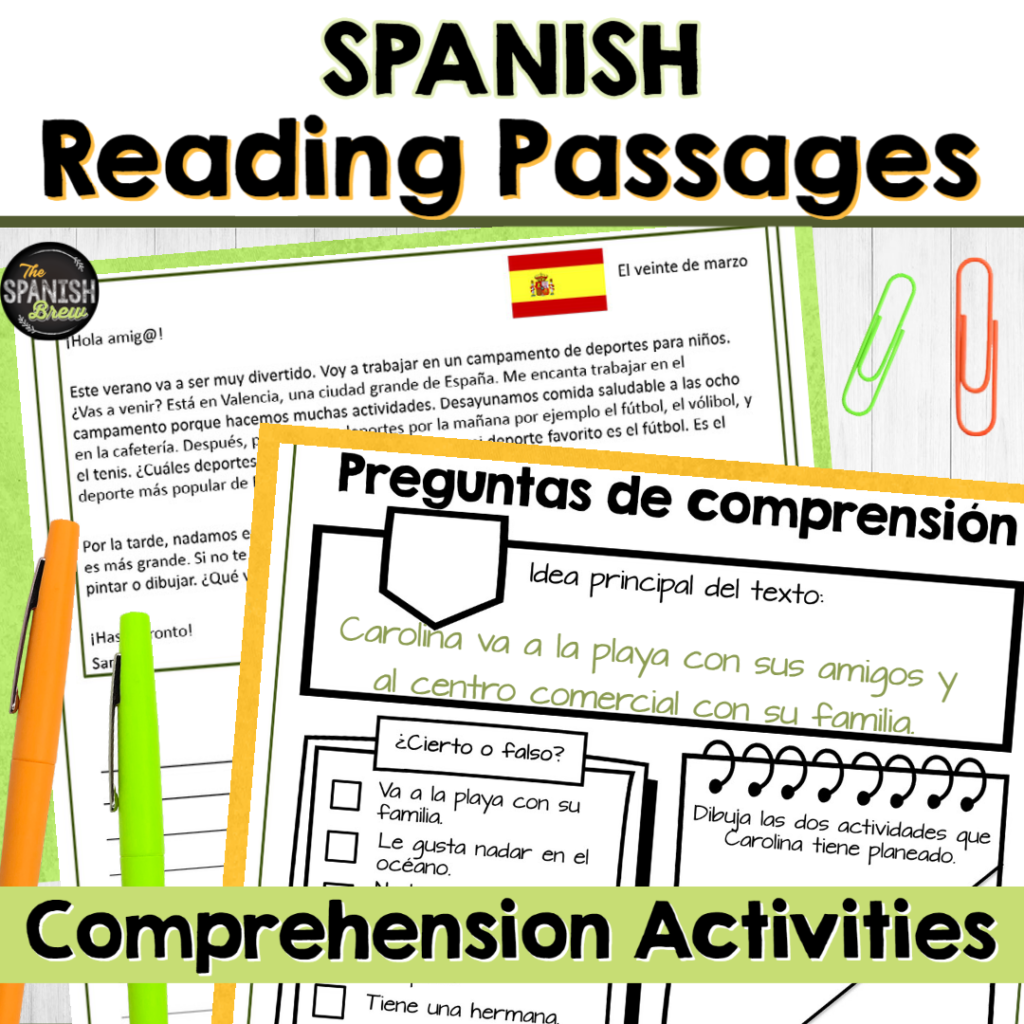Do you love incorporating reading into your Spanish classroom as much as I do but are looking for some new or low prep ways to assess reading comprehension? Read on to find out 5 easy ways to assess reading comprehension in your Spanish class.
True / False Questions
I love true/false questions because it is a quick check for comprehension and students can focus on the reading because they’re not distracted with a large task on the back end. Here is an example I use for teaching the Super 7.
Personal questions
You know that your students secretly love talking about themselves! So use that to your advantage by asking them to make personal connections to the topic you’re covering. For example, if you’re teaching about food, ask them what their favorite food is, what they don’t like eating, if they could only pick one thing to eat for the rest of their lives, what would it be, etc.
Cross cultural comparisons
I love teaching about cultural practices in Spanish speaking countries, and I bet you do too! Students are fascinated with the different ways people live. So turn that around and have them make a compare contrast to their experience. Use a simple Venn Diagram with simple words in a low level class. In an upper level course, let them discuss out loud or write a short paragraph. Want some examples of cross cultural readings? Check out this link here.
Identify the main idea
This is a zero prep option! In the lower levels, let them write a sentence in English to summarize the reading. Or have them pull the “top two sentences” or “top 5 words” that would best summarize. In the upper levels, they can write a sentence or 2 in Spanish to summarize the passage. Collect their summaries and the next day project 3 or 4 and have them vote on the best one and describe why.
Drawing
Simple and no prep! Ask your students to make a drawing to summarize what they read. (Pro tip- collect the drawings. Then the next day randomly pass them out, or pick the best one to project, and have the class summarize the drawing in Spanish.)
Don’t let the assessment of reading comprehension deter you from trying it in your Spanish class. These 5 ideas will get you jump started and ready to assess your students. Use them as formative or summative assessments.
Related posts:
Get Your Spanish Students Reading with These 3 Steps





No Comments